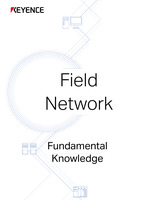PROFIBUS
This section explains PROFIBUS.
Overview
PROFIBUS is a network developed in Germany in 1989 and managed by PROFIBUS & PROFINET International. (In Japan, it is promoted by the Japanese PROFIBUS Organization.) PROFIBUS is used for factory automation, and there are two variations: PROFIBUS DP and PROFIBUS PA.
Wiring Method and Communication Protocol
Wiring method
Based on general-purpose RS-485, PROFIBUS supports transmission speeds ranging from 9600 bps to 12 Mbps. Up to 126 nodes can be connected to a master using shielded twisted pair cables, optical fiber cables, and similar cables.
Communication protocol
PROFIBUS allows multiple masters to exist in a network and communicates using the hybrid method, a combination of the token passing and master/slave methods. Since the release of the first PROFIBUS DP, PROFIBUS DP V0, further developments include PROFIBUS DP V1 which supports cyclic communication and message communication, and PROFIBUS DP V2 which has enhanced functionality as a motion control network.
Characteristics
PROFIBUS DP sends and receives data using the hybrid method that is a combination of the token passing and master/slave methods. Masters without a token cannot send commands. This makes it possible to maintain a condition in which only one master can send commands at any timing in a network.
Related Networks
PROFINET
This is a network wired based on Ethernet.
- Company, product, and network names mentioned on this page are either trademarks or registered trademarks of their respective companies.
- Note that some information, such as applicable standards and specifications, may have changed since this page was published.
November 2015






